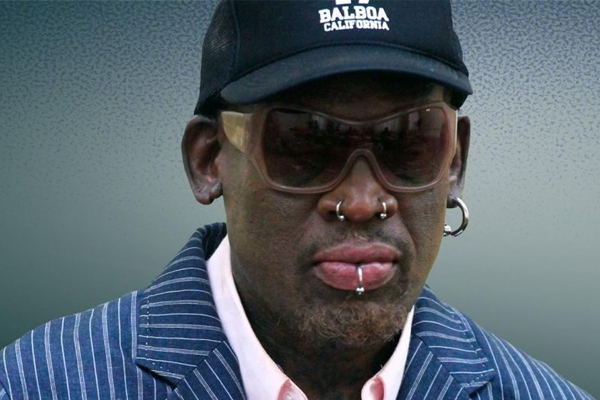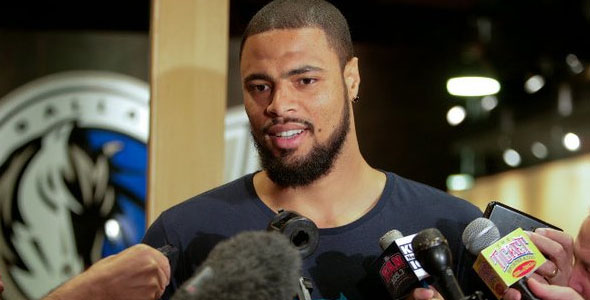Earlier today, I bumped into an interesting article by the Wall Street Journal’s Chris Herring.
In it, Herring took a look at a specialized job that is now becoming more and more commonplace in the NBA: shooting coach.
To Herring’s credit, he makes a mention of the several statistics that support this seemingly unnecessary job. The Pacers, Spurs, and Mavericks have used shooting coaches for a few seasons now. They have also seen an increase in shooting percentages across the board. Jason Kidd is a supporter of shooting coaches, going as far as crediting his extended career to a shooting stroke that a coach helped him rediscover.
But, there’s even more skepticism.
Mainly, the role of a shooting coach seems a bit extraneous to some in the business. In Herring’s article, one particular skeptic sees it as the equivalent to hiring someone to coach you on how to tie your laces. And there’s a point there. Shooting has long been considered the most basic aspect of basketball. If you’re a general manager or owner, why spend thousands on something you could assign to an assistant coach?
Except…shooting isn’t so basic anymore. In fact, a player with a good shooting touch has become very much like common sense: you’d think it was common, but it’s not.
If You Build It, They Will Score
Shooting has become so specialized that guys are paid millions of dollars every year to just drain shots. The likes of Kyle Korver, Steve Novak, and Jodie Meeks are paid to just knock shots down. To note, both Novak and Korver sport slightly higher percentages (.436 and .413 career 3P%, respectively) than Meeks (.371 career 3P%).
What all three of those guys do in exactly the same fashion, though, is shoot the ball. And that is what confuses me about the concept of a shooting coach.
Meeks, Korver, and Novak shoot the ball in almost the exact same fashion. Though each of these players represents a different athletic category, they each have essentially the same shooting mechanics. Each player gets his legs to do most of the work-with the exception of Novak, whose a little less athletic than Korver and Meeks- when they shoot. With some good footwork, each shooter takes a half second to step into a square form, facing the basket, before lifting up for the shot. Each player also has the same release point. They keep the ball for about another second after the initial jump, providing lift, and releasing effortlessly.
As mentioned before, these three players are individual variants of the NBA athlete. Meeks is probably the most athletic of the three, with a quick step and sneaky strength at the rim. Korver is a close second, equipped with underrated speed and footwork. Novak is the biggest guy of the bunch, so the relatively less boost from his jump isn’t surprising. But, then again, at 6’10” and one of the league’s most defense-provoking three-point shots, who’s complaining?
Speaking of height, that’s one reasoning that’s been used when trying to explain the drastically different shooting strokes in the league. Basically put: guys in the NBA are different heights, so they need different forms to accommodate for said height differences. The three players we’re comparing also do away with that logic. Meeks stands at 6’4″, Korver at 6’7″, and Novak boasts a 6’10” frame. Again, the shoot with the same, basic mechanics and- disregarding minor differences in statistical success-have had the same result.
Each of those three guys is a “hand down, man down” check for a defender. You cannot give them breathing room at any range.
Let’s consider one more player: Blake Griffin.
Griffin is making strides toward a more polished offensive game.He is sporting a tweaked freethrow shooting form, courtesy of the Clippers newly hired shooting coach.
But there’s no excuse for his woeful shooting.
Griffin has unreal athleticism, but there’s very little evidence of that in his shot. Griffin puts a tenth of his jumping ability into his shot, forcing his upper body to do more of the work, resulting in shots veering off target. On the rare occasion that Griffin does put strength in his jump and times his release, the result is a thing of beauty. A couple of minor alterations, and you could be looking at Blake Griffin (who already manages averages in the 20’s for ppg) taking-and making- more of these beauties.
It’s all in the mechanics. Why is the National Basketball Association having trouble with that?
Mohamed Abdihakim is a journalism student at Florida Atlantic University. He is a Phoenix Suns fan, who is not prepared for the possibility of Nash winning a title in a Lakers jersey. Mohamed is also a contributor at “Les Snobs”. Interests include International basketball, Mad Men, and blues music. Nearly all stats are credited to Hoopdata or Basketball-Reference.
Twitter handle: @Abdi_hakim





















